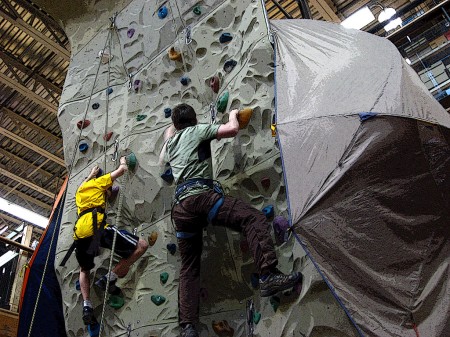Since each individual form of renewable energy has variable output in each region, it makes sense to have a diversified portfolio of energy types. Both because of that and because of the amount of energy inherent to ocean waves and coastal breezes, offshore wind turbines and wave generators could eventually be important parts of the energy mix.
People living in coastal areas have an unfortunate aversion to offshore wind turbines, asserting that they spoil the view. One possible technological response is floating turbines, located farther offshore where the wind is stronger. Such devices could also be moved into whatever location is optimal across a particular span of time.
Wave power is another promising technology, though the first commercial operation won’t be operating until October 2007, when it comes online in Portugal. Waves are challenging to turn into electricity largely because of the character of their motion: low speed, high force, and in many directions. Nonetheless, some novel designs may help to make it one more valuable addition to the arsenal of renewable energy sources.


Multibrid, the German maker of the M5000 offshore wind turbine that is majority owned by French nuclear giant Areva, says it wants to build a turbine manufacturing plant in North America and believes Ontario is an ideal location.
Giant Snake-Shaped Generators Could Capture Wave Power
By timothy on power
Roland Piquepaille writes “UK researchers have developed a prototype of a future giant rubber tube which could catch energy from sea waves. The device, dubbed Anaconda, uses ‘long sea waves to excite bulge waves which travel along the wall of a submersed rubber tube. These are then converted into flows of water passing through a turbine to generate electricity.’ So far, the experiments have been done with tubes with diameters of 0.25 and 0.5 meters. But if the experiments are successful, future full-scale Anaconda devices would be 200 meters long and 7 meters in diameter, and deployed in water depths of between 40 and 100 meters. An Anaconda would deliver an output power of 1MW (enough to power 2,000 houses). These devices would be deployed in groups of 20 or even more providing cheap electricity without harming our environment.”
Anaconda system turns “bulge waves” into cheap ocean power
This story has been making the rounds in the U.K. over the past week. I was alerted to it by a colleague of mine at the Toronto Star whose father is co-inventor of the system being profiled. Professors Francis Farley (my colleague’s dad) and Rod Rainey have designed a 600-foot-long snake-like device — appropriately called the Anaconda — that’s tethered to the sea bed and wiggles around in the water to produce electricity. It’s basically a rubber tube, about 20-feet wide, that is sealed at both ends and filled with water. As waves come in they squeeze the one end of the tube, causing a “bulge wave” to form inside the tube that travels from one end to the other. The bulge builds in size and momentum until it reaches the opposite end of the tube and is forced through a turbine, causing it to spin and generate electricity. There are many wave-energy systems out there, as well as some that also look like snakes, though these are made of metal and have hinges and articulated joints. The Anaconda, on the other hand, is pretty simple in design. Rubber tubing is light and durable, and the set-up is relatively straight forward. The inventors believe it has the potential to be the lowest-cost wave energy system on the market, competing quite well with other forms of renewable energy and some conventional systems.